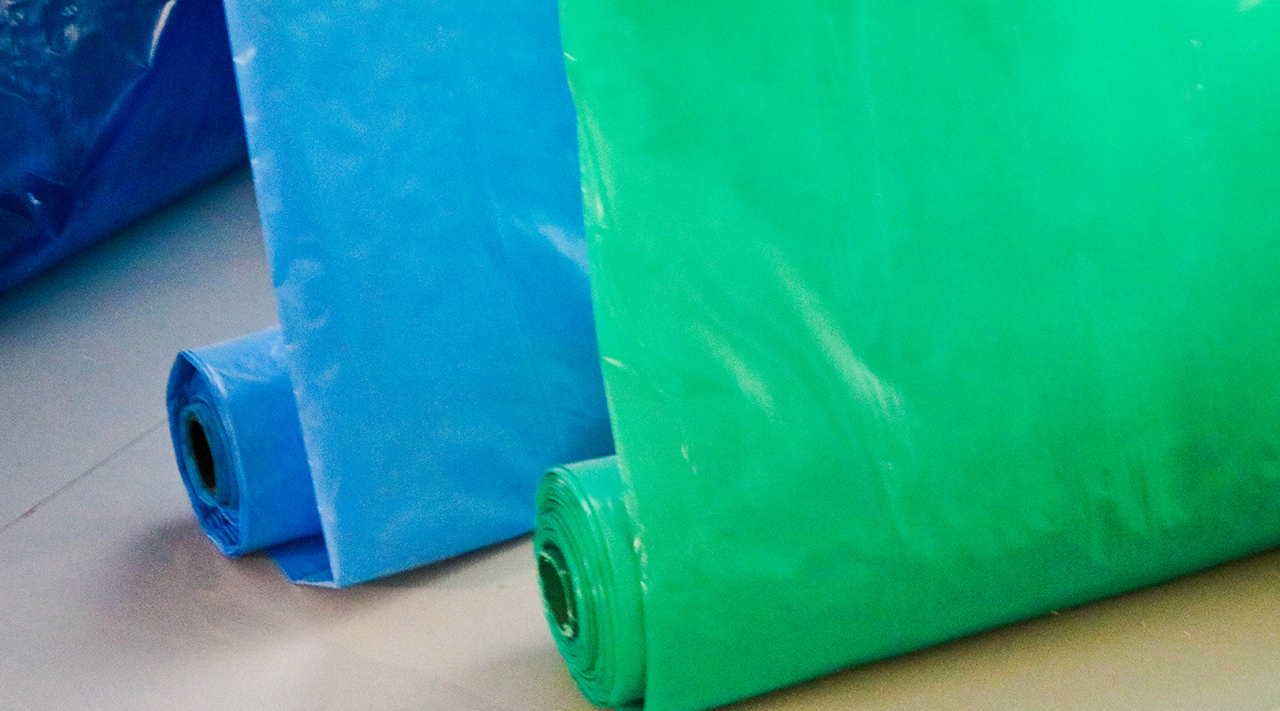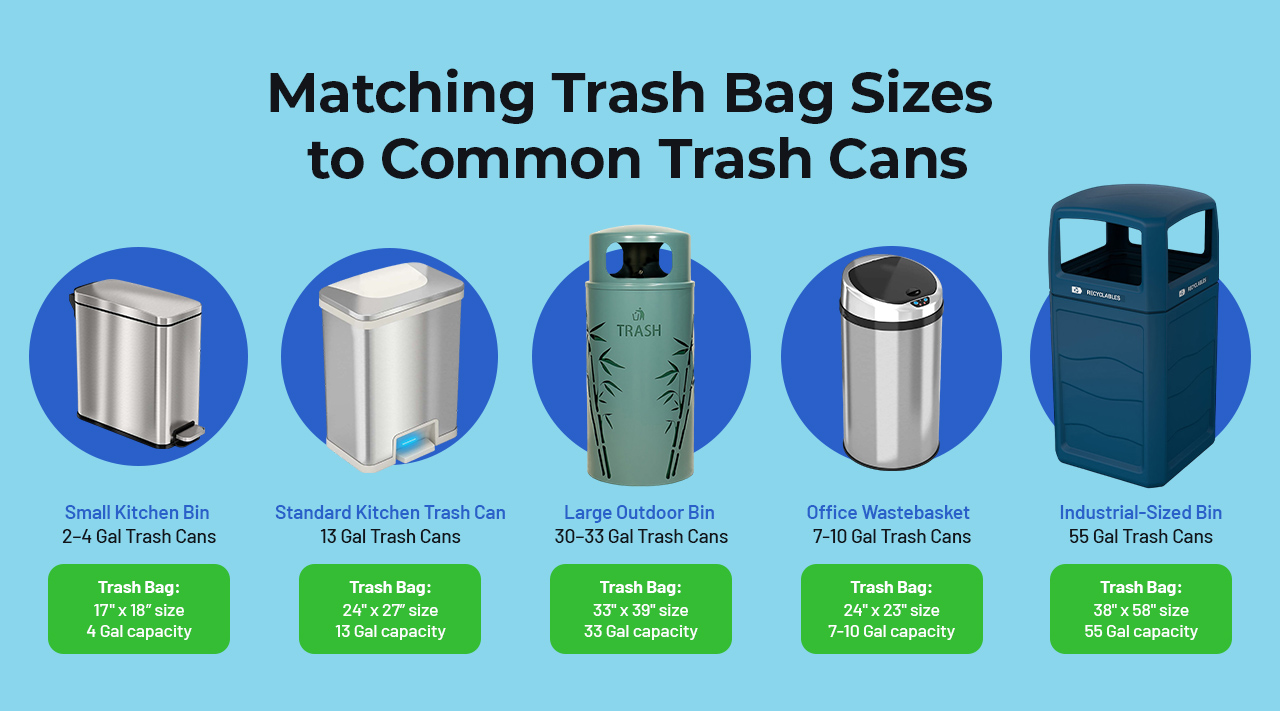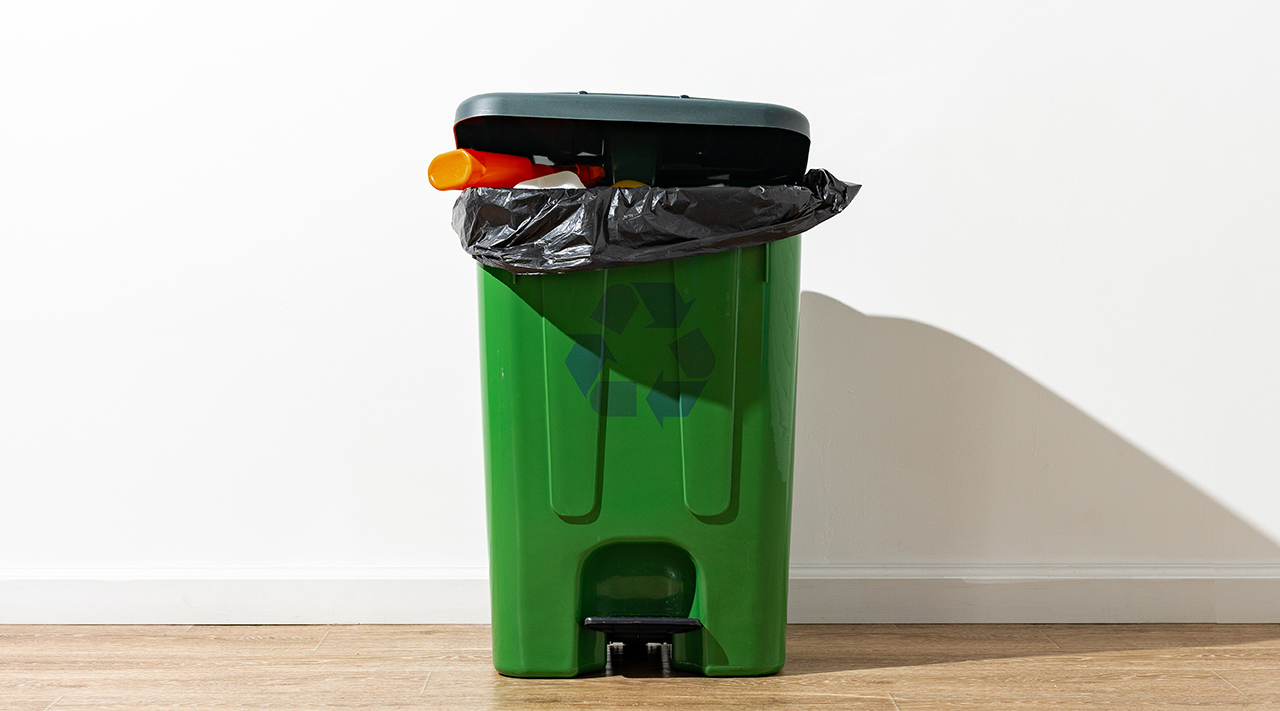Trash Bag Guide | Sizes, Strengths & Eco-Friendly Options
Take the fuss out of buying trash bags with our ultimate buying handbook. This guide will equip you with the knowledge to make informed decisions, save money, and save the planet. So, let's dive in and talk trash – in the best way possible!
Trash Bag Sizes, Types & Materials Explained
Trash bags might seem simple, but choosing the right one can make a world of difference in your waste management routine. These unsung heroes silently bear the burden of our discarded items, from coffee grounds to crumpled papers. However, not all trash bags are created equal. Understanding the different types of trash bags and their intended uses is the first step toward making smarter, more eco-friendly choices.
Here’s a quick rundown of the main types of trash bags you’ll encounter:
Kitchen Trash Bags:
Typically smaller and lighter, kitchen trash bags are perfect for everyday household waste. They’re designed to fit standard kitchen bins and offer enough capacity for daily disposal without being too bulky.
Tall Kitchen Trash Bags:
These bags are designed for larger kitchen bins, offering more capacity and ensuring you don’t have to take the trash out as frequently. They’re great for households that produce a lot of waste.
Outdoor Trash Bags:
Outdoor trash bags are thicker and more durable, making them ideal for yard waste, outdoor use, and heavier garbage. These bags are perfect for those big clean-up jobs and can handle rough materials without tearing.
Heavy-Duty Trash Bags:
Heavy-duty trash bags, also known as contractor bags, are built for tough tasks like construction debris and large-scale cleanups. They offer maximum strength and are designed to withstand heavy loads and sharp objects.
Compostable Trash Bags:
For the environmentally conscious, compostable trash bags are a great choice. Made from plant-based materials, these bags break down naturally and are perfect for organic waste. They’re an excellent option for those looking to reduce their environmental impact.
Each type serves a unique purpose, and choosing the right one can save you time, money, and frustration. But how do you know which bag is best for your needs? That’s where this guide comes in handy!
Understanding Trash Bag Thickness and Material
When it comes to trash bags, thickness, and material are crucial factors that determine how well a bag will perform. Let’s dive into the details of mil thickness, density, and materials used in trash bag manufacturing.
Mil Thickness:
Mil thickness measures how thick a trash bag is, with one mil equaling 0.001 inches. The higher the mil number, the thicker and stronger the bag. Here’s a quick rundown of common mil thicknesses and their uses:
• 0.5 mil: Suitable for light, dry waste like paper.
• 0.7-0.9 mil: Good for general household trash.
• 1.0-1.2 mil: Ideal for heavier kitchen waste.
• 1.5-2.0 mil: Perfect for outdoor use or heavy-duty applications.

High-Density vs. Low-Density Can Liners:
High-Density Can Liners:
• Made from thinner plastic, these liners are lightweight and tear more easily if punctured.
• Best for paper and lightweight trash, making them ideal for offices or bathrooms where no sharp or irregularly shaped objects are being discarded.
• Provide excellent vapor and moisture protection, making them USDA and FDA-approved for food use.
• More temperature-resistant, and suitable for use in environments ranging from -40 to 212 degrees Fahrenheit.
• High-density bags are also more cost-effective due to their lighter construction, which lowers freight, storage, and warehousing costs.
Low-Density Can Liners:
• Constructed from thicker plastic, these liners offer superior resistance against puncturing and tearing.
• Ideal for heavy, wet trash, and are perfect for kitchens, yard waste, or trash with sharp, jagged edges.
• Low-density bags have superior stretch properties, making them a great multi-purpose option.
• Some low-density liners, known as linear low-density liners, provide the same superior stretch benefits but with greater strength at a thinner gauge, offering enhanced durability without excess material use.
Types of Trash Bag Seals
Star Seal:
The most common seal type, star seal can liners are manufactured by folding the bottom of the bag several times and then sealing it, virtually eliminating leaks. This design allows the liner to conform to the shape of the trash can and distribute waste evenly.
Flat Seal:
Flat seals involve simply sealing the bottom edge, creating a generally leak-proof product. However, they don’t conform well to waste receptacles and can be more difficult to handle.
Gusset Seal:
Gusset seal can liners are reinforced at the edges, making them strong, but they can be prone to leaking when used with wet trash.
Understanding the material and thickness of trash bags, as well as the type of seal used, is crucial for choosing the right bag for your needs. For example, if you’re dealing with heavy, wet trash, a low-density liner with a star seal would be your best bet.
Determining the Right Size for Your Trash Bag
When it comes to trash bags, size really does matter. Choosing the right trash bag dimensions can make a world of difference in your waste management routine. Let’s dive into the details of how to find the perfect fit for your bins.
Step-by-Step Guide to Measuring Can Liners
1. Measure the Height:
Start by measuring from the bottom of your trash can to the top rim. Add a few inches to allow for overhang, which helps secure the bag in place.
2. Determine the Width:
Measure the diameter of the can’s opening. For rectangular bins, measure both the length and width.
3. Calculate the Capacity:
To find the volume, multiply the height by the width (and length for rectangular bins). This will give you an idea of the trash bag size you need.
4. Consider the Contents:
Think about what you’ll be disposing of. Heavier items may require a stronger, larger bag.
5. Check the Trash Can Liner Size Chart:
Many manufacturers provide charts that match can sizes to appropriate bag dimensions. This can be a helpful reference point.

Matching Trash Bag Sizes to Common Trash Cans:
• Small Kitchen Bin (2-4 gallons): Trash bag size: 17" x 18" or 4-gallon trash capacity.
• Standard Kitchen Trash Can (13 gallons): Trash bag size: 24" x 27" or 13-gallon trash capacity.
• Large Outdoor Bin (30-33 gallons): Trash bag size: 33" x 39" or 33-gallon capacity.
• Office Wastebasket (7-10 gallons): Trash bag size: 24" x 23" or 7-10 gallon capacity.
• Industrial-Sized Bin (55 gallons): Trash bag size: 38" x 58" or 55-gallon capacity.
When in doubt, it's better to go slightly larger with your trash bag size. A bag that's too small can lead to spills and messes, while a slightly oversized bag can always be tucked in.
Pro Tip: Keep a trash can liner size chart handy. Many retailers and manufacturers offer these charts, which can be invaluable when you're shopping for new bags or bins.
Purchasing Tips: How to Make Informed Choices
Making informed choices when buying trash bags can save you money, reduce waste, and contribute to a more sustainable lifestyle. Here’s what to consider before making your purchase:
Factors to Consider Before Buying (Price, Quantity, Availability)
1. Price:
While it's tempting to opt for the cheapest option, remember that quality often comes at a cost. Investing in slightly more expensive, durable bags might save you money in the long run by reducing the need for double-bagging or frequent replacements.
2. Quantity:
Buying in bulk can often lead to savings, but make sure you have adequate storage space. Also, consider your usage rate to avoid storing bags for extended periods, which can lead to degradation.
3. Availability:
Choose bags that are readily available in your area to ensure a consistent supply. Some eco-friendly options might be harder to find, so plan accordingly.
4. Environmental Impact:
According to a study, 84% of respondents said recycling was a priority for them, with 56% saying they found it easy to recycle. Consider choosing bags made from recycled materials or biodegradable options to align with these environmental concerns.
5. Intended Use:
Match the bag type to your specific needs. For instance, kitchen bags should be leak-proof, while yard waste bags need to be more durable.
6. Brand Reputation:
Opt for reputable brands known for quality. Reading customer reviews can provide valuable insights into real-world performance.
7. Packaging:
Look for bags that come in minimal, recyclable packaging to further reduce waste.
8. Compatibility:
Ensure the bags are compatible with your trash cans. Ill-fitting bags can lead to spills and messes.
9. Odor Control:
If you're dealing with smelly waste, consider bags with odor-blocking technology.
10 Ease of Use:
Features like drawstrings or handles can make bag removal and tying much easier.
It's worth noting that 63% of respondents admitted to knowingly putting plastic recycling into a general waste bin. This statistic highlights the importance of not only choosing the right trash bags but also using them correctly. When purchasing, consider bags that make it easy to separate recyclables from general waste, encouraging better waste management practices.
Remember, the cheapest option isn't always the most cost-effective in the long run. By considering these factors and making informed choices, you can find trash bags that meet your needs, fit your budget, and align with your environmental values. Take the time to compare options, read labels, and even test different types to find the perfect trash bag solution for your home or business.

Concluding Advice on Selecting and Using Trash Bags Efficiently
As we wrap up our ultimate trash bag buying handbook, it's crucial to remember that our choices in waste management can have a significant impact on the environment. The United Nations has set an ambitious goal: By 2030, substantially reduce waste generation through prevention, reduction, recycling, and reuse. Our trash bag choices and usage habits can play a part in achieving this global objective.
Summary of Key Takeaways From This Guide
1. Size Matters:
Always measure your trash cans and match them with appropriate bag sizes to prevent waste and ensure efficient use.
2. Thickness and Strength:
Consider the mil thickness and density of bags based on your specific needs. Remember, thicker isn't always better if it leads to unnecessary plastic use.
3. Material Choices:
Explore eco-friendly options like biodegradable or recycled plastic bags when possible, aligning with global sustainability goals.
4. Proper Usage:
Use bags correctly to maximize their efficiency. Avoid overfilling, which can lead to tears and spills.
5. Mindful Purchasing:
Consider factors like price, quantity, and availability, but also factor in environmental impact when making your choice.
6. Recycling Awareness:
Be conscious of what goes into each bag. Separate recyclables properly to contribute to waste reduction efforts.
7. Quality Over Quantity:
Investing in higher-quality bags can often be more cost-effective and environmentally friendly in the long run.
8. Adaptability:
Keep a variety of bag types on hand to address different waste management needs efficiently.
9. Regular Reassessment:
Periodically review your trash bag needs and usage patterns to ensure you're using the most efficient options.
10. Beyond the Bag:
Remember that efficient trash bag use is just one part of a comprehensive waste reduction strategy. Consider ways to minimize waste generation overall.
By applying these takeaways, you're not just choosing the right trash bag; you're contributing to a larger global effort to reduce waste and promote sustainability. Every small decision, from the thickness of your kitchen trash bag to how you separate your recyclables, can make a difference.
Frequently Asked Questions (FAQ)
Can I Use High-Density Trash Bags for Kitchen Waste?
Yes, high-density trash bags can be used for kitchen waste, especially if you’re dealing with dry or less messy trash. However, for wet or potentially leaky waste, low-density bags are typically better.
How Can I Make My Trash Disposal More Eco-Friendly?
You can make your trash disposal more eco-friendly by using compostable or biodegradable trash bags, separating recyclables properly, and opting for bags made from recycled materials.
Does Thicker Trash Bag Mean Better Quality?
Not necessarily. While thicker trash bags are stronger, they also use more plastic. It’s important to choose the right thickness for your needs without overdoing it, especially if you’re trying to reduce your environmental impact.
Recent Posts
-
Different Types of Cleaning Products Explained
Whether you're cleaning an office, school, gym, or retail space, understanding cleaning product type …Jun 27, 2025 -
Flat Mop vs Spin Mop: Which One Cleans Best?
When it comes to keeping your facility clean, choosing the right mop can make all the difference. Bo …May 30, 2025 -
Sponge Mop vs. String Mop: Which is Right for Your Facility?
When it comes to keeping floors clean, both sponge mops and string mops are trusted cleaning tools. …May 23, 2025




